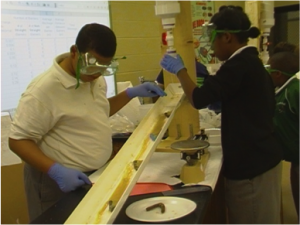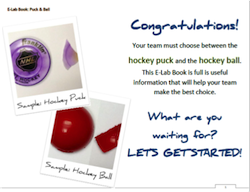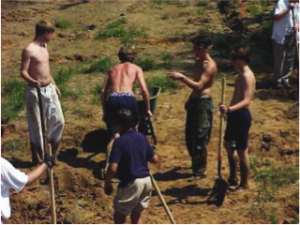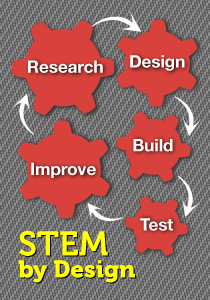3 Ways to Make Research Fun
A MiddleWeb Blog
Anne Jolly began her career as a lab scientist, caught the science teaching bug and became an award-winning middle grades science teacher. Today she works on an NSF-supported team, developing standards-based STEM curricula for grades 6-8. Anne’s blog appears weekly at MiddleWeb, and one important focus is to engage readers in chats around STEM subjects. See all of Anne’s posts here.
R~E~S~E~A~R~C~H. I could almost see the students shudder. The teacher in the class I was visiting announced that students were going to do some research for their engineering challenge. I knew what was going through their heads. They were conjuring visions of poring over volumes of print material and filling in the blanks on a research handout.
Well, that is one way to research. But it’s not a particularly appealing approach for most middle grades kids. No wonder the whole class gave a collective “sag and sigh” — and the teacher looked like she wanted to join in.
It doesn’t have to be that way!
Before you warm up the copy machine and drag out the books, let’s look at the role research has in the engineering design process. What is it? What do we use it for?
Consider this definition for engineering challenges: Research is the systematic process of collecting and analyzing information to increase our understanding of our challenge. And part of the process involves communicating our understanding to others.
With that definition in hand, you’re set to broaden students’ grasp of what STEM research is all about. Let’s look at three ways you could engage students in research that won’t involve them in poring over musty books looking for discrete bits of information.
1. Scientific investigation

This investigation was actually the research phase of the project because teams were collecting and analyzing information they would use to make decisions about their final barrier design (their engineering challenge). Hands-on investigations are exciting ways to engage students in research. Be sure students know exactly what information they need to collect for their engineering challenge.
2. Digital investigations
Students need to be efficient, smart users of media and the Internet. One engineering project required students to investigate genetically transmitted diseases. Students worked in pairs on computers to investigate websites specified by the teacher and collected the information they needed for their project. The websites could include text, infographics, video and more.

You probably have a variety of digital tools that students can use for researching, gathering, and sharing information – wikis, podcasts, VoiceThread, and so on. For ideas, check out 6th grade teacher Bill Ferriter’s Digitally Speaking wiki.
3. Talk with an “expert”

In one of our engineering challenges, students set out to solve a real problem at the school. They wanted to build a wetland to help with the runoff from their newly constructed school site. An environmental engineer from a nearby university came in and discussed with students what they would need to know about building a wetland. He and the students walked around the campus as he guided them with questions that would help them choose a good site. He and his college class remained a resource for the students as they constructed the wetland. A Master Gardeners group helped students select plants suited to live in the wetland. How about that for “research”?!
I know that many readers have used inventive and engaging ways to involve your students in research. I hope you’ll share one of those ideas here!






























I find it helpful to let the children participate in the decision of WHAT they will research or investigate. If they are interested in a topic, they will be more motivated to use the tools available to achieve the outcome. I present a set of “problems” and give them “space” to discuss the problem, possible solutions, and then investigate the part that interests them the most.
I love the part about giving them space to discuss the problem and possible solutions. That’s probably the most mind-developing part of the process. What sort of topics do you give them to investigate?
Dear Amy,
I think the WHAT is an interesting idea. Building enthusiasm is always key…and as they get into the real work of doing the investigating, they will get into it more and more.
Your description of student reaction to “Research” is so true! When I was in school, that was what research meant, and I hated it. What I love about research during an engineering challenge is that it broadens the research horizon for students (and sometimes teachers).
You’re so right! Who’d have ever thought that “research” would mean digging in to a hands-on investigations to get information? I think this might actually be a breakthrough idea for some teachers and students (and professors).
Dear Anne,
You said “This investigation was actually the research phase of the project because teams were collecting and analyzing information they would use to make decisions about their final barrier design (their engineering challenge). Hands-on investigations are exciting ways to engage students in research. Be sure students know exactly what information they need to collect for their engineering challenge.”
I think you’ve raised a helpful perspective. So often people ignore that students can build models of real-life and do some testing. This week I did something similar. We built bridges from paper….first looking at how bridges can be strengthened by adding layers and then changing the investigation to the length of the span for a single layer.
What we did to elevate the learning was to then combine all the research outcomes. As students completed their testing, they entered their results into an Excel spreadsheet we posted on the SmartBoard. By the day’s end, we had 45 different sets of experimental data. The next day, we were able to talk about why an individual pair’s data might be the same or different than what the class, as a whole experienced. Then we compared each class to the other three hours.
I think this kind of researching from their own investigations is powerful. Using Excel amps it up and helps them generalize. Do you think that this might be an interium step before they build a prototype?
Marsha, this is a really solid, useful practice. One thing we preach in science is that the more data you have, the more reliable the results are. You can make much better decisions using multiple sets of data. Think how much higher the reliability was with 45 sets of data than with one.
Was this a difficult process to set up? Did you set up a spreadsheet and did the kids understand how to enter the data? What would make this way of collecting data a smooth process for teachers?
I love the idea!